
As summarised earlier by Houses & Holes, the Australian Bureau of Statistics (ABS) has released labour force data for the month of March, which reported a 0.2% lift in the headline unemployment rate to 5.6%, as well as a seasonally-adjusted -36,100 decrease in jobs across the economy, with a -7,400 decrease in full-time jobs supplemented by a -28,700 decline in part time jobs. The result partially offset last month’s stellar result, whereby a change in the sample and increased population projections combined to create the biggest monthly gain in employment since July 2000.
The increase in the headline unemployment rate was also tempered by a fall in the labour force participation rate by 0.2% to 65.1% (see below charts).
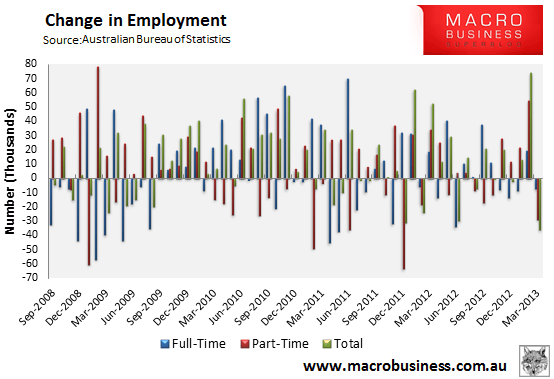
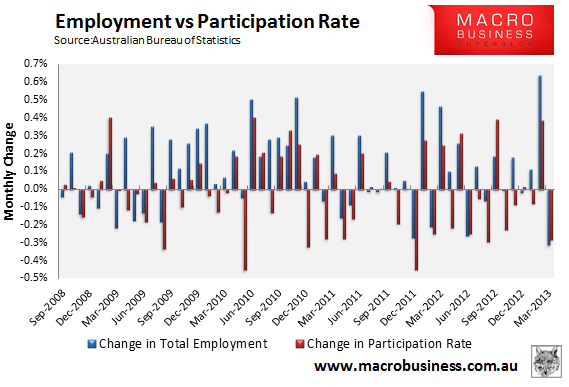
The result returns total employment to the mild uptrend that has been in place since late-2010 (see next chart).
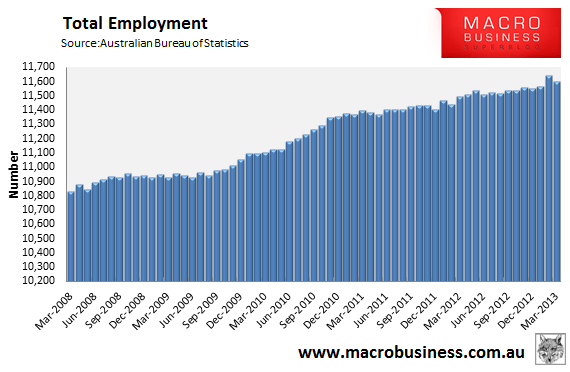
Australia’s employment market is no longer being driven by the mining states, with New South Wales and Victoria now leading jobs growth over the past year:
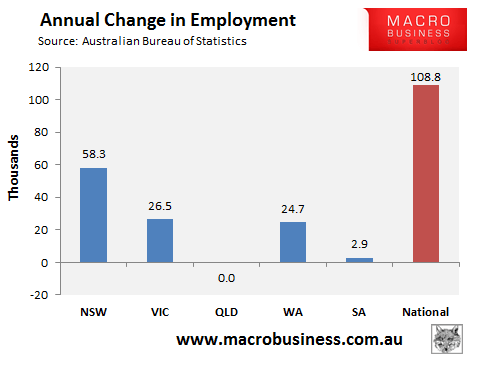
The variance of unemployment rates across the capitals continues to narrow, also suggesting the labour market is re-balancing away from mining:
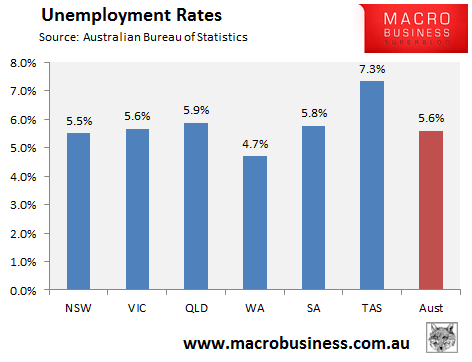
That said, the state seasonally-adjusted figures are notoriously volatile and subject to a big margin of error. As such, the below chart shows the ABS’ trend unemployment rates, which shows Western Australia and New South Wales with the lowest unemployment, Tasmania with the highest, and the others close together above the national average:
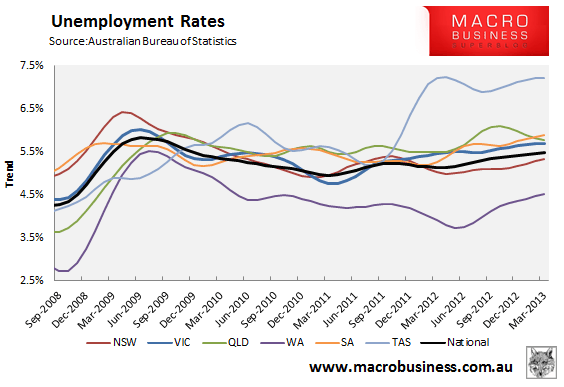
Another negative from this release is that the aggregate number of hours worked fell by -0.3% nationally in March and has shown little growth over the past 18 months:
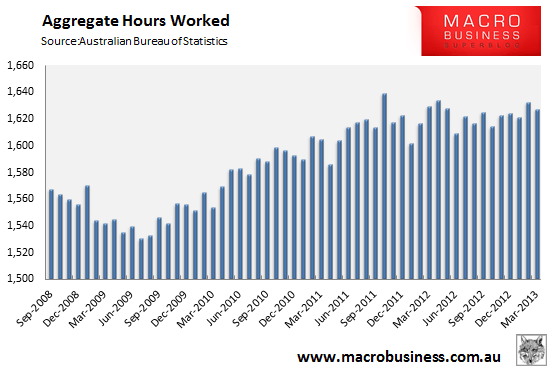
Annual growth in the aggregate number of hours also fell in March – to -0.1% from 1.0% – driven by big falls everywhere but Western Australia:
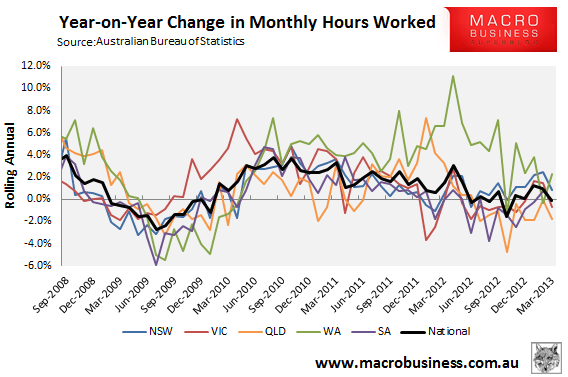
The employment-to-population ratio also resumed its downtrend after last month’s bounce:
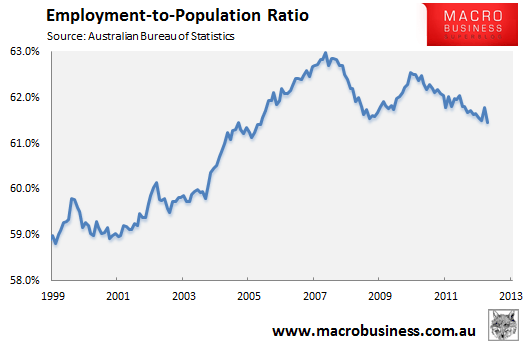
The rolling annual average number of hours worked per employed person also fell by -0.1 hours to 140.7 hours per month:
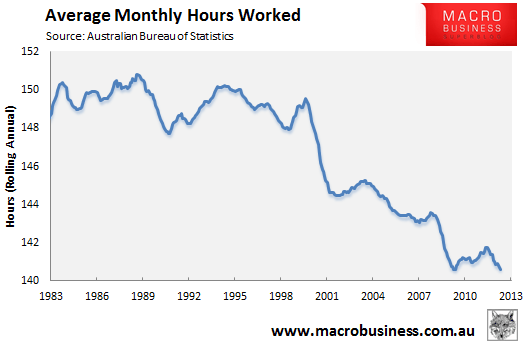
Finally, the below chart summarises the annual change in the key employment aggregates:
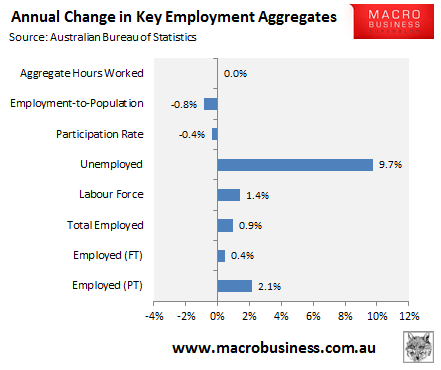
Overall, this release shows that last month’s employment bounce was an anomaly, and suggests that the labour market remains fairly soft. The upside is that the employment market is becoming more uniform, with less reliance on the mining sector to deliver jobs growth.

